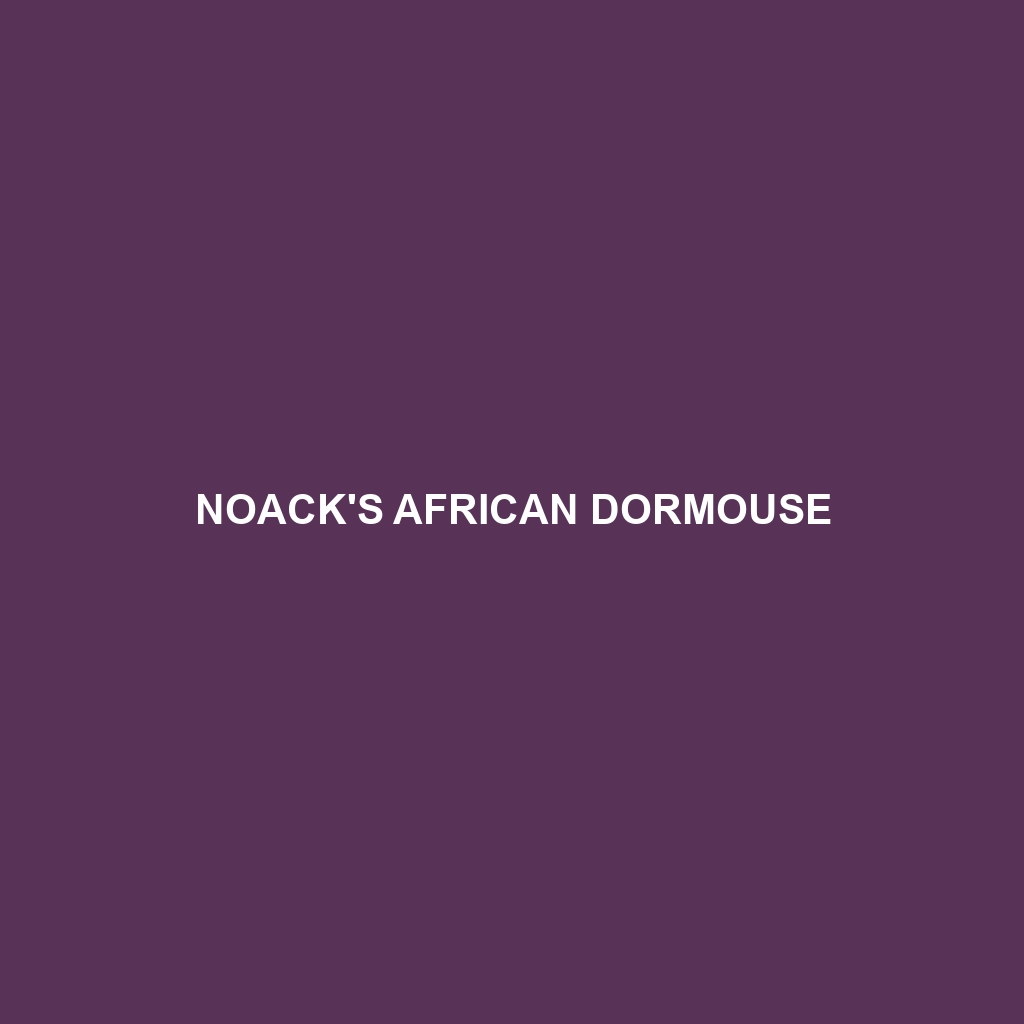Noack’s African Dormouse
Common Name: Noack’s African Dormouse
Scientific Name: Graphiurus noacki
Habitat
Noack’s African Dormouse is primarily found in the dense forests and woodlands of Central and East Africa. Its range includes regions in countries such as Tanzania, Uganda, and Kenya, where moist and humid environments provide the ideal setting for this species. The dormouse prefers habitats that offer plenty of cover, including thickets and shrubs, allowing it to thrive away from predators.
Physical Characteristics
This small rodent typically measures between 10 to 15 centimeters in length, with a tail that can be equally long. The fur of Noack’s African Dormouse is soft and dense, exhibiting a grayish-brown color on the upper body and a lighter cream or white underbelly. Distinctive features include large, round eyes adapted for nocturnal activity and long whiskers that enhance its sensory perception.
Behavior
Noack’s African Dormouse is primarily nocturnal, exhibiting crepuscular activity patterns as it forages for food during the twilight hours. It is known for its exceptional climbing abilities, often found in trees where it builds nests from leaves and twigs. The species is solitary in nature but may come together during breeding seasons. Notably, it has a habit of storing food for later consumption, showcasing its instinctual foraging behaviors.
Diet
The diet of Noack’s African Dormouse mainly consists of seeds, fruits, and insects, making it an omnivorous species. This dormouse plays a vital role in seed dispersal; as it feeds on fruits, it helps promote plant growth in its habitat. Its feeding habits are particularly significant during the rainy season when food resources become plentiful.
Reproduction
Noack’s African Dormouse typically breeds once or twice a year, with the breeding season occurring during the warmer months. Female dormice give birth to 2 to 5 offspring at a time after a gestation period of around 28 days. The young are born blind and helpless but develop rapidly, weaning around six weeks after birth. Parental care is primarily provided by females, who ensure the survival of the offspring.
Conservation Status
The current conservation status of Noack’s African Dormouse is categorized as ‘Vulnerable’. Habitat loss due to deforestation and agriculture presents significant threats to its population. Conservation efforts are crucial to preserve this unique species and its natural habitat, as awareness regarding its vulnerable status continues to grow.
Interesting Facts
An interesting aspect of Noack’s African Dormouse is its ability to enter a state of torpor to conserve energy during colder months or times of food scarcity. This adaptation not only helps it survive but showcases the dormouse’s resilience against environmental challenges. Additionally, the species is seldom observed in the wild due to its elusive nature and nocturnal habits.
Role in Ecosystem
Noack’s African Dormouse plays a vital role in its ecosystem as both a seed disperser and prey for larger predators. By consuming fruits and seeds, it aids in the propagation of various plant species while providing a food source for birds, snakes, and small mammals that depend on it. Its interactions within the food web highlight its importance in maintaining ecological balance.
